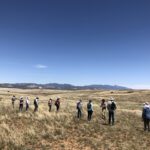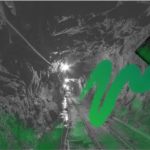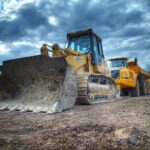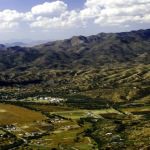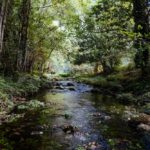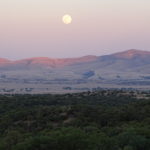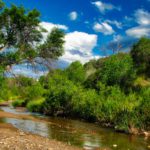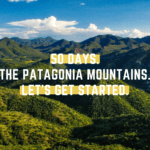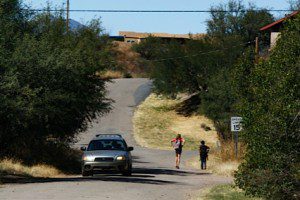
Oct 23, 2012 | Blog
We would like to question Greg Lucero’s statement that Arizona Mining Inc / Wildcat Silver will be a good neighbor. “Wildcat Silver will be a good neighbor,” [NI 10/16/2012]
Mr. Lucero is the Vice-president of Sustainability of Arizona Mining Inc / Wildcat Silver. One would think that he should know that they would be good neighbors. In fact, he has no background in mining, environmental science or ecology. He can only be guided by the companies past practices. This might be a problem. Arizona Mining Inc / Wildcat Silver has never run a mining operation before. Though their executives have all worked in the mining industry for various other companies, they have never run an operation from start to finish.
We can look at the history of their executives. Five of the executives from Arizona Mining Inc / Wildcat Silver are also on the executive board of Augusta Resources. The documentary “Cyanide Beach” brought into question the business decisions of these same executives in abandoning a mining project and leaving a small town in Sardinia, Italy with a toxic nightmare. The Patagonia Mountains are a precious resource for Santa Cruz county that must be protected, not only for their value as the watershed for the community of Patagonia but for ecological reasons as well. It would be one thing if Arizona Mining Inc / Wildcat Silver had experience operating a mine with a successful closure and reclamation of a mining project in its portfolio, but they do not. Apparently, neither do their executives.
The company does own one property here in Santa Cruz county but its corporate office is in Denver. Only Mr. Lucero lives in Santa Cruz county, the rest of management is in Denver and Vancouver, Canada.
 Arizona Mining Inc / Wildcat Silver did open a new facility in Patagonia with much fanfare and a big check to our volunteer fire department. They plan to use it to store drilling core samples. “Wildcat mining inaugurates new facility” [Weekly Bulletin 10/17/2012] We have some problems about their choice of locations. The new Arizonarizona Mining Inc / Wildcat Silver facility is located within a residential neighborhood and across the street from a school. In fact, traffic will pass by two schools to get there. It’s a route shared with children walking or biking to school with narrow streets and blind curves. Let’s hope they observe the posted speed limit of 15 mph.
Arizona Mining Inc / Wildcat Silver did open a new facility in Patagonia with much fanfare and a big check to our volunteer fire department. They plan to use it to store drilling core samples. “Wildcat mining inaugurates new facility” [Weekly Bulletin 10/17/2012] We have some problems about their choice of locations. The new Arizonarizona Mining Inc / Wildcat Silver facility is located within a residential neighborhood and across the street from a school. In fact, traffic will pass by two schools to get there. It’s a route shared with children walking or biking to school with narrow streets and blind curves. Let’s hope they observe the posted speed limit of 15 mph.
Why not store core samples on their private land near the drilling operations? Why risk the safety of the children and residents near their new facility in town? What does that tell you? Good neighbors, in name only.
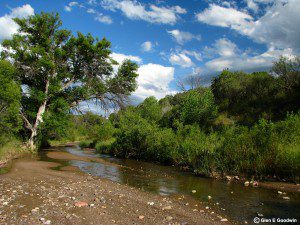
Jul 30, 2012 | Blog
Protecting Our Water Resources; Is Drought the New Normal?
 With the Summer Rain season in full swing, it’s easy to forget that we live in the desert. It’s also easy to forget that we are in a long-term drought. There have been two recent stories in the news about our strained water resources. Both stories discuss water flow in nearby Cienega Creek. KVOA offers NASA images capture Tucson – then and now. The Arizona Daily Star has an article called Cienega Creek, other S. AZ. streams, increasingly dry.
With the Summer Rain season in full swing, it’s easy to forget that we live in the desert. It’s also easy to forget that we are in a long-term drought. There have been two recent stories in the news about our strained water resources. Both stories discuss water flow in nearby Cienega Creek. KVOA offers NASA images capture Tucson – then and now. The Arizona Daily Star has an article called Cienega Creek, other S. AZ. streams, increasingly dry.
The drought raises questions. The biggest one is how in the world can we support mining in the Santa Rita and Patagonia Mountains given the huge amounts of water they consume? Rosemont’s supposed solution is using CAP water to recharge the aquifer. Whether it can be done and whether it will help is debatable. Regardless, Rosemont Copper can pump all the groundwater they want without the CAP recharge.
There are four other mining companies doing mineral explorations in the Patagonia Mountains. Arizona Mining Inc (Wildcat Silver), the one furthest along, estimated that their planned open pit mine would consume roughly 700,000 gallons of water per day. Per day! For comparison, the maximum pumping capacity of the Town of Patagonia’s well water is 110,000 gallons per day. Don’t forget the 3 other international mining companies that want to mine in the Patagonia Mountains. Using the figure of 700,000 gallons of water per day per mine results in 2.8 million gallons of water used per day. Big numbers need perspective.
Because all water sites seem to deal in acre feet, let’s do comparisons in those figures. 2.8 million gallons equals 8.6 acre feet. Estimated water usage from four mines per year using Arizona Mining Inc’s (Wildcat Silver) numbers comes out to 3,139 acre feet. The Santa Cruz Active Management Municipal Areas which includes Nogales, Rio Rico, Tubac, Arivaca, uses 7800 acre feet of water per year. That does not include Patagonia, Sonoita or Elgin. Mining in the Patagonia Mountains could potentially use almost half of all the water used annually in the most populated cities in Santa Cruz County.
Do we even have that much water? Is this drought the new normal?
Sources:
An Investigation of Energy Use, Water Supply and Wastewater Treatment at Patagonia, Arizona
AMA Cultural Water Demand – Municipal Demand
Trucks, water, and jobs at issue with silver mine
Jun 14, 2012 | Blog
Tombstone Arizona has made national headlines regarding its battle with the Forest Service over water rights. For 130 years pipelines have transported water from the Huachuaca Mountains 26 miles to Tombstone. The Monument Fire and subsequent mud slides last year destroyed this pipeline system. Tombstone has been trying to get emergency permission from the Sierra Vista District of the Coronado National Forest to bring in heavy equipment to repair the water system without success. The case has also gone to court, twice. Tombstone has lost both times.
Reasons given by the courts include the question of actual need and urgency of the repairs. Also in question is Tombstone’s entitlement to the water in the national forest. Tombstone claims rights to 25 springs while the Forest Service says they have permits for only 5. The federal government said none of that gives the city unfettered right of access. The Forest Service has also cited the Wilderness Protection Act as a reason for their reluctance to allow the requested repair of the pipeline. Machinery of any kind is banned in a Wilderness Area where the pipeline is located.
Another reason given was the presence of Mexican spotted owls. The owls are a threatened species. Supposedly, their presence is the big reason that the Forest Service wouldn’t grant Tombstone a permit to use heavy equipment to fix the pipeline. I have a hard time believing that one.
Here in the Patagonia Mountains we are lucky to still have Mexican spotted owls. Last year, the Sierra Vista District of the Coronado National Forest granted permission to Arizona Minerals aka Wildcat Silver to start exploratory drilling operations within Mexican spotted owl habitat. This drilling project would have operated 24 hours a day, 7 days a week, for 300 consecutive days. Along with noise and light disturbance there was the extremely high likelihood of destruction of owl habitat. Even the presence of a nearby federally-designated Mexican spotted owl Protected Activity Center didn’t block the approval of the drilling project. We, along with the Defenders of Wildlife and Sky Island Alliance had to sue the Forest Service to stop the drilling project.
It’s not just about the owls. The bigger question is how does the exact same Forest Service office come up with completely opposite policy actions?
U.S. high court denies Tombstone water relief
Sierra Vista Herald Sat, 06/02/2012
Tombstone readies picks and shovels
Sierra Vista Herald 06/07/2012
Spotted owl could be game-changer in Tombstone water war
CNN 06/09/2012
May 14, 2012 | Blog
One of those stories that caught our attention was the sudden and immediate departure of Arizona Mining Inc / Wildcat Silver (TSX:AZ) President and CEO Christopher M Jones, announced in a Arizona Mining Inc / Wildcat Silver press release dated May 7, 2012. Board members Richard Warke will assume CEO duties and Donald Taylor, will become President and Chief Operating Officer as well as continuing in their current duties.
You might remember Warke from other news. He is also on the Board of Directors for Augusta Resource (TSX/NYSE:AZC), the company that owns Rosemont Copper. He’s one of 2 men that Save the Scenic Santa Ritas called for investigations by U.S. and Canadian securities regulators, the Arizona Corporation Commission, and the Arizona Attorney General for failure to disclose past bankruptcy.
By the way, Augusta and Arizona Mining Inc / Wildcat Silver are closely related. In addition to Warke, they share 4 other Board members. They also list the same corporate office address, #400 – 837 Hastings St. Vancouver, BC.
It seems extremely odd that if all is going well, why the sudden departure of Chris Jones, President and CEO of Arizona Mining Inc / Wildcat Silver without a new replacement. Another interesting coincidence is that Augusta/Rosemont Copper also had a change at the top just two days later. Augusta announced the retirement of Raghunath Reddy as CFO in a press release dated May 9, 2012.
Two top level executives leaving the Augusta/Wildcat family within two days of each other seems peculiar to us. What about to you? We suppose that the reaction of the investors to this news will tell us more.
Dec 22, 2011 | Blog
FOR IMMEDIATE RELEASE
Hardshell exploratory drilling threatens endangered wildlife on Coronado National Forest
Conservation groups challenge project
TUCSON, Ariz.—A coalition of conservation groups has gone to court seeking a timeout on construction of the Hardshell Project on the Coronado National Forest in southern Arizona today. The groups are challenging the U.S. Forest Service for approving exploratory mineral drilling for a planned 3,000-acre mine without required studies of how it will impact endangered wildlife and the environment.
“The Forest Service appears to have pulled a fast one on this project by approving it without first assessing its environmental impact. There’s no way to expand industrial mining activities here without causing irreversible damage to wildlife,” said Craig Miller, Defenders of Wildlife’s Southwest representative. “When you take a broad view of all the industrial mining projects the Forest Service is allowing in this area, it’s alarming that it’s being done without considering impacts on our wildlife and wild places. It’s especially serious for endangered animals like the jaguar, whose survival depends on land managers ensuring that a few wild places like the Patagonia Mountains remain intact.”
The Hardshell Project site threatens habitat for endangered Mexican spotted owls, lesser long-nosed bats, and could cut off key migration corridors for ocelots and jaguars. Yet, the ForestService approved the project after waiving the need for analyzing its environmental impact based upon groundless assumption that the drilling would have no significant environmental effects.
“The Coronado National Forest is located within the heart of the Sky Island region, one of the most ecologically diverse spots in the world,” said Jenny Neeley, conservation policy director for Sky Island Alliance. “This project will likely degrade important wildlife habitat and disrupt a critical movement corridor for the jaguar and ocelot, which are known to roam this area. The ForestService is responsible for sustaining the unique biodiversity of this region, and as part of this responsibility it is required to take a hard look at the long-term impacts of this project before allowing it to move forward.”
The groups are asking the courts to put the project on hold until the Forest Service undertakes a thorough environmental review of its impacts.
“We want the Forest Service to give this proposed drilling project the serious consideration it is due,” said Wendy Russell with the Patagonia Area Resource Alliance. “A large part of our economy depends on tourism to these wild places. More important, the project is sited along Harshaw Creek, a major source of water for the town of Patagonia. We hope the court recognizes the importance of putting this project on hold until theForest Service does the proper analysis.”
Link to Complaint
###
Contacts:
James Navarro, Defenders of Wildlife, (202) 772-0247; jnavarro@defenders.org
Jenny Neeley, Sky Island Alliance, (520) 624-7080 x13; Jenny@skyislandalliance.org
Defenders of Wildlife is dedicated to the protection of all native animals and plants in their natural communities. With more than 1 million members and activists, Defenders of Wildlife is a leading advocate for innovative solutions to safeguard our wildlife heritage for generations to come. For more information, visit www.defenders.org.
Sky Island Alliance is a grassroots non-profit organization dedicated to the protection and restoration of the rich natural heritage of native species and habitats in the Sky Island region of the southwestern United States and northwestern Mexico. For 20 years, SIA has worked with volunteers, scientists, landowners, public officials, and government agencies to establish protected areas, restore healthy landscapes, and promote public appreciation of the region’s unique biological diversity.
The Patagonia Area Resource Alliance is an unincorporated association of volunteer community members dedicated to protecting and preserving the Patagonia, Arizona area. PARA is a watchdog organization that monitors the activities of industrial developers such as mining corporations, as well as government agencies, to make sure their actions have long- term, sustainable benefits to our public lands, our watershed, and our town. PARA is also committed to outreach and education within our community on the potential negative impacts hard rock mining could have on our surrounding ecosystems and to our growing eco-tourism based economy.

 Arizona Mining Inc / Wildcat Silver did open a new facility in Patagonia with much fanfare and a big check to our volunteer fire department. They plan to use it to store drilling core samples. “Wildcat mining inaugurates new facility” [Weekly Bulletin 10/17/2012] We have some problems about their choice of locations. The new Arizonarizona Mining Inc / Wildcat Silver facility is located within a residential neighborhood and across the street from a school. In fact, traffic will pass by two schools to get there. It’s a route shared with children walking or biking to school with narrow streets and blind curves. Let’s hope they observe the posted speed limit of 15 mph.
Arizona Mining Inc / Wildcat Silver did open a new facility in Patagonia with much fanfare and a big check to our volunteer fire department. They plan to use it to store drilling core samples. “Wildcat mining inaugurates new facility” [Weekly Bulletin 10/17/2012] We have some problems about their choice of locations. The new Arizonarizona Mining Inc / Wildcat Silver facility is located within a residential neighborhood and across the street from a school. In fact, traffic will pass by two schools to get there. It’s a route shared with children walking or biking to school with narrow streets and blind curves. Let’s hope they observe the posted speed limit of 15 mph.
 With the Summer Rain season in full swing, it’s easy to forget that we live in the desert. It’s also easy to forget that we are in a long-term drought. There have been two recent stories in the news about our strained water resources. Both stories discuss water flow in nearby Cienega Creek. KVOA offers
With the Summer Rain season in full swing, it’s easy to forget that we live in the desert. It’s also easy to forget that we are in a long-term drought. There have been two recent stories in the news about our strained water resources. Both stories discuss water flow in nearby Cienega Creek. KVOA offers 